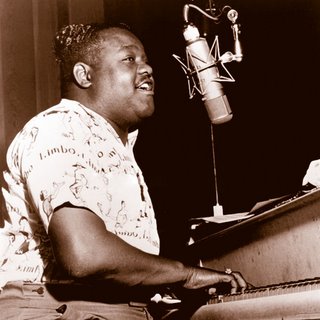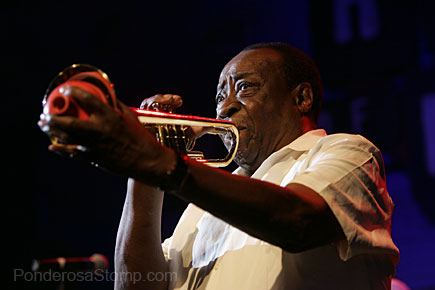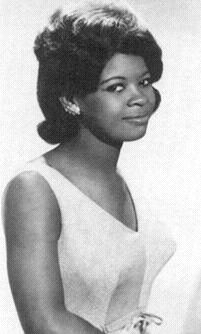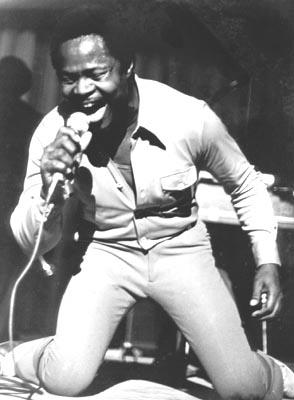VARIOUS ARTISTS / “Classic New Orleans Mixtape”
Of all the arts, music is the purest expression of the spirit of a people precisely because of all the arts, music has the most direct connection to emotions regardless of the education, status, class or political orientation of both the music maker and the audience. For this reason, music is often called the universal language. Although it is true that not all music has universal appeal, it is nevertheless also true that music is far easier to appreciate across cultures than any of the other arts.
Regardless of a musician’s intentions, their music invariably carries the emotional outlook not only of the particular musician playing the music but also the emotional outlook of the larger social conditions that have shaped the individual musician.
All of which is background chatter to help us appreciate the unique musical culture known as New Orleans music. To paraphrase the self-proclaimed albeit widely recognized Emperor of New Orleans music, Ernie “Burn, K-Doe Burn” K-Doe: I believe all American music started in New Orleans.
While that might not be true of country and western, I think just about everything else has some relation to New Orleans—and come to think of it, we did have a state governor, Earl Long, who was into C&W. Anyway, hyperbole aside, most of us can agree that New Orleans music is distinctive and influential worldwide.
This week we feature 44 songs from a four-CD, 119 track, box set called Crescent City Soul – The Sound of New Orleans 1947 – 1974. It was the “Official CD Collection of the 1996 New Orleans Jazz & Heritage Festival.” Unfortunately, it is out of print—“unfortunately” because this is the best single collection of classic New Orleans R&B ever assembled and it doesn’t even come close to including everything. There’s no Neville Brothers, only one track from The Meters, no Chocolate Milk, no Allen Toussaint, no secondline music, only one Mardi Gras song, no Mardi Gras Indians, and only one song that references “The Popeye” (a New Orleans dance that produced a bevy of recordings) yet, even considering all that is not included, this collection is leagues better than whatever is a distant second collection.
In a way, that’s the story of New Orleans music in a nutshell—overlooked and forgotten. But, c’est la vie. However, all is not lost, a 30-track CD, Highlights from Crescent City Soul: The Sound of New Orleans 1947-1974, is still available.
I won’t even try to give a track by track run down, instead I want to point out three important features of the music and also mention four important contributors who are represented here.
The (in)famous first major jazz composer and part time pimp, Jelly Roll Morton is often quoted concerning the “latin tinge” in New Orleans music. Well, it’s more than a tinge. The use of afro-caribbean rhythms is integral to the syncopation that is a general hallmark of 20th century New Orleans music.
While it is popular to think of New Orleans as being a “French” city, the truth is that the fabled French Quarter was built by the Spanish. Any knowledgeable look at the architecture will demonstrate the Spanish influence. You don’t even have to know that St. Louis Cathedral, one of the oldest in all of the America’s is flanked by the Cabildo, which was the seat of the city’s first government.
Even more to my contrary point, the socalled French influence is actually Haitian in origin. Our city’s population doubled between 1796 and 1804 as a result of immigration from Haiti via Cuba—people fled the revolution in Haiti escaping initially to Cuba and then on to New Orleans. There was a city census taken and thus the population doubling is an official tally and not a rough estimate. The census had three categories: whites, free people of color, and enslaved. This population increase deeply affected the musical culture.
New Orleans already had a vibrant African-heritage community and the celebrations in Congo Square had already been established for over forty years. What we had was strong African music expressions (including African and African-modeled instruments in addition to musical forms) as a foundation to which were added Caribbean influences. One hundred years after the Civil War, the music was still going strong and reflecting its origins.
You can tell New Orleans music by its rhythms.
If the first element might be an emphasis on the drum, the second element is a heavy reliance on the piano.
The centrality of the piano is a major divergence from the preponderance of Caribbean music which makes extensive use of the guitar, as does classic country blues. I could go more deeply into this distinction but for now just listen to the music, listen to the different piano phrasings and vamps.
One day we should trace recorded New Orleans piano from Jelly Roll Morton down to Ellis Marsalis, Dr. John and James Booker.
One result of piano centrality mated to afro-rhythms is a distinctive way of harmonizing and of shaping melody. It’s easy to point to call and response but that is a generalization. For a more specific understanding, check how many of these songs use what we call breaks: pauses and suspensions to heighten the tension and emphasize the syncopation. It’s a consistent technique that obliterates the monotony of four/four, sing song rhythmic patterns.
The third element is also obvious but too often overlooked. A lot of these songs have lyrics that incorporate non-English, non-European language words. The first song in the set is “Ooh Poo Pah Doo.” There is a whole emotional language in New Orleans that has no precise translation but which natives use with a savoir faire that seems instinctive but which is actually an example of acculturation within an environment that values and retains its cultural legacies.
Afro rhythms, piano structured, non-European languaged songs, that’s New Orleans music. 
The first of the four people I wanted to mention is Fats Domino who was the only man who knocked The Beatles off their strong hold during their hey day atop the Billboard charts. A pianist and vocalist, Fats Domino represented hardcore New Orleans pride. As a recording artist, only Lil Wayne is close to Fats in terms of record sales. Within the context of their respective time periods, Fats was a far bigger artist. Fats is represented by four songs: “I’m Walkin’,” “Walkin’ To New Orleans,” “I Want To Walk You Home,” and “I’m In Love Again.”
Trivia note: Fats talking about “walking” is a real reflection of his era. My father, who was from Donaldsonville, Louisiana, about sixty or so miles from New Orleans, walked to New Orleans when he was teenager.
Dave Bartholomew is the major prototype for composer/producer mogul. Bartholomew was also the bandleader for Fats Domino and composer of most of Fats’ hits. Dave was an extremely able trumpeter who was influenced by Dizzy Gillespie and the whole bebop movement. Bartholomew also made a major name for himself as a producer of jingles, commercials and media theme songs. Two of the five Bartholomew selections, “Poppa Stoppa Theme Song” and “Good Jax Boogie” are examples of Dave’s commercial prowess. Dave had a wicked sense of humor as demonstrated by “The Monkey” and “That’s How You Got Killed Before.” The fifth song, “Four Winds,” is typical of New Orleans R&B, which often used a shuffle rhythm rather than a hard backbeat. No other New Orleans musician, including Allen Toussaint, is even close to Dave Bartholomew as a composer of hit songs.
A few weeks back we featured Irma Thomas as a contemporary artist. This time the focus is on her work from the sixties—it’s amazing that her signature sound is unchanged even though her phrasing and song selection is now broader. Irma is important in that very few females made a big impression on the local New Orleans scene. Irma is represented by three songs: “It’s Raining,” “I Done Got Over It” and “Ruler Of My Heart.”
And we close as we opened with Mr. Ernie K-Doe. I wrote a nostalgic praise song for The Empreror a while back. If I had to pick one musician to represent New Orleans music, all of the greats such as Louis Armstrong, Jelly Roll Morton, Allen Toussaint, Dr. John and so many others notwithstanding, I’d have to go with Ernie K-Doe. It’s not just his music nor his eccentricities, it’s… it’s… well, the man is a Charity Hospital baby who became recognized, loved and respected in his own home town, which is no small feat.
While much more could be said, I think it best we stop here. Word to the wise, this mixtape represents one of the best summaries of classic New Orleans R&B you’ll ever run across—in fact, even if you had a couple of hundred dollars to burn, you still couldn’t put together a more extensive collection. So there it is—get it while you can!
—Kalamu ya Salaam
Classic New Orleans Mixtape Playlist
1. “Ooh Poo Pah Doo Pt. 1” - Jessie Hill
2. “I'm Walkin' “ - Fats Domino
3. “Don't You Just Know It” - Huey 'Piano' Smith
4. “I Know” - Barbara George
5. “Poppa Stoppa Theme Song” - Dave Bartholomew
6. “Bon Ton Roulet” - Clarence Roulet
7. “I Like It Like That Pt. 1” - Chris Kenner
8. “Jock-A-Mo” - Sugar Boy Crawford
9. “Fortune Teller” - Benny Spellman
10. “Let the Good Times Roll” - Shirley & Lee
11. “Whip It On Me” - Jessie Hill
12. “Good Jax Boogie” - Dave Bartholomew
13. “It's Raining” - Irma Thomas
14. “The Blues” - Al Robinson
15. “Mother-In-Law” - Ernie K-Doe
16. “Ain't Got No Home” - Clarence "Frogman" Henry
17. “Blue Monday” - Smiley Lewis
18. “The Things That I Used to Do” - Guitar Slim
19. “Workin' In the Coal Mine” - Lee Dorsey
20. “Cissy Strut” – Meters
21. “The Monkey” - Dave Bartholomew
22. “Walkin' to New Orleans” - Fats Domino
23. “That's How You Got Killed Before” - Dave Bartholomew
24. “39-21-40 Shape” – Showmen
25. “Four Winds” - Dave Bartholomew
26. “I Want to Walk You Home” - Fats Domino
27. “A Certain Girl” - Ernie K-Doe
28. “I'm In Love Again” - Fats Domino
29. “Lawdy Miss Clawdy” - Lloyd Price
30. “Trick Bag” - Earl King
31. “She Put the Hurt on Me” - Prince La La
32. “ABC's Pt. 1” - Smilin' Joe
33. “ABC's Pt. 2” - Smilin' Joe
34. “Lipstick Traces” - Benny Spellman
35. “Tain't It the Truth” - Ernie K-Doe
36. “I'll Gonna Be A Wheel Someday” - Bobby Mitchell
37. “I Hear You Knockin' “ - Smiley Lewis
38. “Tell It Like It Is” - Aaron Neville
39. “Hello My Lover” - Ernie K-Doe
40. “I Done Got Over It” - Irma Thomas
41. “I Cried My Last Tear” - Ernie K-Doe
42. “Ruler of My Heart” - Irma Thomas
43. “Let's Live” - Aaron Neville
44. “Ooh Poo Pah Doo Pt 2” - Jessie Hill
This entry was posted on Monday, January 26th, 2009 at 12:59 am and is filed under Classic. You can follow any responses to this entry through the RSS 2.0 feed. You can leave a response, or trackback from your own site.
Leave a Reply
| top |